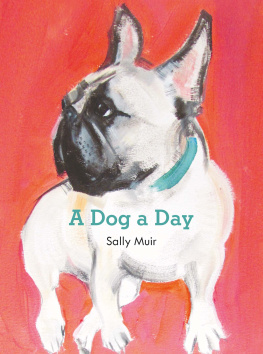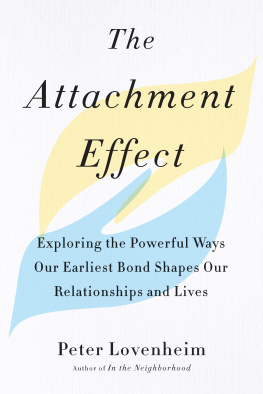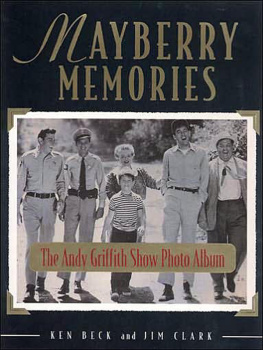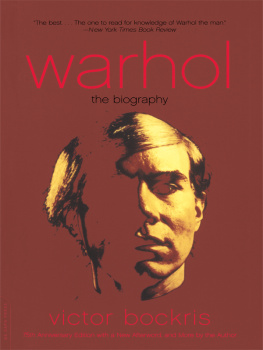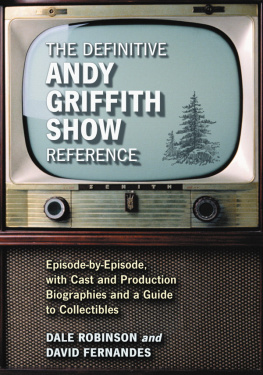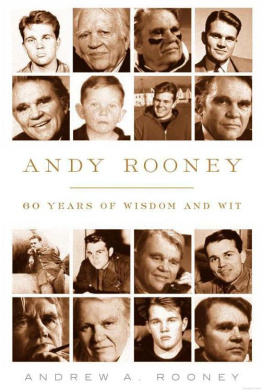Thank you for downloading this Simon & Schuster eBook.
Join our mailing list and get updates on new releases, deals, bonus content and other great books from Simon & Schuster.
C LICK H ERE T O S IGN U P
or visit us online to sign up at
eBookNews.SimonandSchuster.com
We hope you enjoyed reading this Simon & Schuster eBook.
Join our mailing list and get updates on new releases, deals, bonus content and other great books from Simon & Schuster.
C LICK H ERE T O S IGN U P
or visit us online to sign up at
eBookNews.SimonandSchuster.com
ALSO BY DANIEL DE VIS
I Forgot to Remember
(with Su Meck)

Simon & Schuster
1230 Avenue of the Americas
New York, NY 10020
www.SimonandSchuster.com
Copyright 2015 by Daniel de Vis
All rights reserved, including the right to reproduce this book or portions thereof in any form whatsoever. For information, address Simon & Schuster Subsidiary Rights Department, 1230 Avenue of the Americas, New York, NY 10020.
First Simon & Schuster hardcover edition November 2015
SIMON & SCHUSTER and colophon are registered trademarks of Simon & Schuster, Inc.
For information about special discounts for bulk purchases, please contact Simon & Schuster Special Sales at 1-866-506-1949 or .
The Simon & Schuster Speakers Bureau can bring authors to your live event. For more information or to book an event, contact the Simon & Schuster Speakers Bureau at 1-866-248-3049 or visit our website at www.simonspeakers.com.
Jacket design by Jonathan Bush
Front jacket photograph Hulton Archive/Getty Images
Library of Congress Control Number: 2015005877
ISBN 978-1-4767-4773-6
ISBN 978-1-4767-4775-0 (ebook)
To Sophie, Madeleine, and Donovan,
my beautiful family.
Contents
Introduction
A NDY T AYLOR and Barney Fife could make the world stand still. Stretching out on the front porch of Andys Mayberry home, Andy and Barney would reel off hypnotic meditations on the mundanities of life. Their conversations defied the frenetic pulse of their medium, network television. For millions of viewers, The Andy Griffith Show was a sanctuary in a nervous world, with two friends at its center, reclining on a porch.
Ya know what I think Im gonna do? Barney tells Andy in one moment of Mayberry Zen, as Andy strums a guitar. Im gonna go home, have me a little nap, then go over to Thelma Lous and watch a little TV. Several seconds pass in silence. Yeah, I believe thats what Ill do: go home, have a nap, head over to Thelma Lous for TV. More silence. Yep, thats the plan: ride home, a little nap...
The Andy Griffith Show endures like no other artifact of televisions golden era. In the fifty-five years since its October 1960 debut, Andy Griffith has never left the airwaves. At the dawn of 2015, Griffith episodes air several times a day, watched by a fan club with more than one thousand chapters and celebrated in an annual festival that draws thirty thousand fans to a real-life Mayberry. To fully appreciate this programs staying power, even by comparison to other television classics, try to find a Honeymooners convention.
The Griffith Show tapped the talents of its eras finest television producers, writers, and directorsalong with an unparalleled ensemble of actors, a cast that included not only Don and Andy but also future Hollywood powerbroker Ron Howard and the multitalented Jim Nabors. But the programs undeniable quality does not fully explain its longevity.
There is something iconic, something quintessentially American, about The Andy Griffith Show. The program appeared at a moment of dramatic flux in American society. People were leaving farms for factories and towns for cities. The civil rights movement was waxing, and antiwar protests were brewing. It was a time of assassinations, electrified music, and slackening standards on sex and drugs. Yet, the Griffith Show refused to embrace those changes, or even to acknowledge them. Instead, the program trained its gaze backward, revisiting and reviving the rural Americana of the 1930s, the time of Andys childhood in North Carolina and Dons in West Virginia. The Griffith Show helped viewers recall a simpler time, helped them reconnect with their own past, at a moment when Americans desperately needed the reminder. As Technicolor chaos swirled around them, millions of viewers embraced the black-and-white tranquility of the Griffith Show and held on tight.
The Griffith Show would showcase televisions most tender friendship: Ange, affable sheriff of the rural hamlet called Mayberry, and Barn, his jumpy deputy. Andy was a gentle parody of a country lawman, fighting crime in a town that had none, protecting a citizenry that was palpably safe. Barney was a parody of Andy, bug-eyed, childlike, and diminutive. Andy protected Barney from the outside world, holding its bitter realities at bay, just as he protected Mayberry itself, its denizens and its homespun traditions.
Sheriff Taylors fatherly bond with Deputy Fife emanated from real life; it was the foundation of their friendship. Their personalities meshed. Andy was dominant; Don was submissive. Andy was big and loud, ribald and wild, quite the opposite of the sage sheriff. Don was gaunt and quiet, restrained and reserved, a sharp contrast to the manic deputy. They shared a past. Both had known stark poverty: Andys first bed was a bureau drawer, Dons a cot in the kitchen. They grew up on the same diet of radioJack Benny, Edgar Bergen, The Lone Ranger and amid cinemas golden age. Both men embraced entertainment as an identity as they approached manhood. Both rode their talents as far as their local arts scene would take them. Both men came to New York and bombed, retreated to the South, then returned to take Manhattan by sheer force of talent and will.
Above all, Andy and Don shared a transcendent sense of whimsy, a particular way of looking at the world. The same Southern peccadilloes cracked them up: Old men ruminating for hours about buying a bottle of pop. Daddy asking the tailor to throw in an extra pair of socks with that new suit. An uncle slapping a five spot into your palm with great fanfare. Old ladies fussing about the pickle contest at the county fair. Families dressing up to dine at the Eye-talian restaurant with the fancy checkered tablecloths.
Like any friendship worthy of study, theirs was complicated. Andy sacrificed his own comedic talent to play Dons straight man. This selfless act would reap enormous profits for Andy as half owner of the Griffith Show . Don, by contrast, left Griffith after five years with far less money in his pocket and little financial stake in its future.
Both men recognized the strength of their pairing. Neither would reach the same comedic heights alone. Yet, Andy refused Dons offer of partnership beyond the Griffith Show . Andy wanted to stand on his own feet. Years later, when Andy finally found success again with the courtroom drama Matlock and his ego recovered, he finally, magnanimously, offered a part to Don, who was himself struggling for work, and the partnership was briefly rekindled.
Neither mans story can be told alone. Andy was a master entertainer and an occasionally brilliant dramatic actor. Don was a comedic great, his oeuvre a sort of missing link between the celebrated eras of Jerry Lewis and Woody Allen. Yet, like all the best comedy teams, Andy and Don were better together than apart. Their best work invokes Abbott and Costello, Laurel and Hardy. Every time they sat down to write, the results were timeless.
Next page





